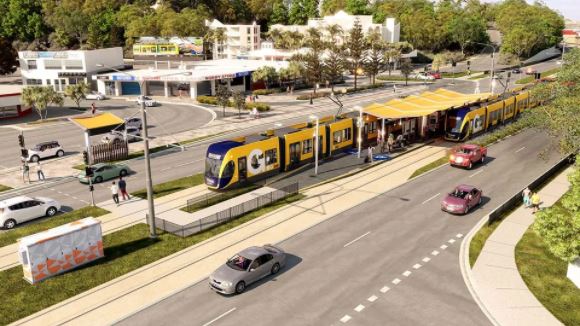Red-hot demand is pushing material supply, construction costs and delivery times on the Gold Coast to its limits.
Apartment sales on the Gold Coast have picked up pace in recent months with figures across 2021 so far outstripping the surge at the end of 2020.
Speaking at The Urban Developer’s Gold Coast in Focus Webinar, a panel of the city’s key research experts, agents and developers discussed the confluence of factors accelerating development momentum.
The city has been in high demand from interstate buyers with elevated household savings, drawn to increased affordability in south-east Queensland compared to rival markets in Sydney and Melbourne.
“It has been the perfect storm with low interest rates, the inability to travel and working remotely fuelling the region’s recent growth,” Lacey Group managing director Adam Lacey said.
“All of these factors bundled up have made the Gold Coast one of the most desirable lifestyle choices for anyone looking for new property in Australia.”

▲ A number of major Gold Coast development projects have been built along the Gold Coast Light Rail Stage 3 route, now recognised as an urban regeneration spine.
According to Urbis, which sampled 70 per cent of the Gold Coast market, there were 750 apartments sold in the first quarter of 2021, doubling the sales figures recorded in the final quarter of last year.
There has also been a continued trend in the decreasing scale of projects with the average apartments per project dropping from 100 in 2018 to 70 in 2020.
This has contributed to an undersupply with 6300 dwellings per annum needed per year to support upwards of 15,000 new arrivals.
Currently the city is delivering an average of 3800 dwellings each year, Urbis director of planning Matthew Schneider said.
Colliers International director David Higgins said buyers active in the Gold Coast market were also trending towards larger apartments, seeking two- and often three-bedroom formats predominantly in the city’s southern beaches.
“While this is a mature demographic seeking comfort, with good proportions and amenity, the number one reason driving their decisions is location,” Higgins said.
“Projects conceived by the right sponsors in the right location and targeting this demographic are reaping the rewards and achieving the best results.
“Of the Victorian purchasers, 80 per cent are owner-occupiers and 20 per cent investors, while New South Wales purchasers are similarly split, 75 per cent and 25 per cent respectively.”
Mosaic founder Brook Monahan said there had been a shift towards the mid-market—apartments between $600,000 and $1.5 million—however, the difficulty remained around feasibility with increasing site values.
“There has been a spike in land values but also in construction costs,” Monahan said.
“I’ve never seen prices rise as quickly as they have recently in the past 17 to 18 years.
“When you have land values being brought forward for development sites and construction costs escalating around labour shortages and materials then margins are compressed substantially.
“If people keep designing and delivering premium products, in turn increasing sales rates in order to get their feasibility to work, then at some point in time the market will level out and suggest that there is too much of that product being delivered.”
Forme managing director David Calvisi echoed the sentiment saying that while the on-market acquisition environment had escalated, there was little difference in off-market pricing.
“Construction pricing in the last six to 12 months has experienced a 10-13 per cent spike in escalation which can blow out a feasibility,” Calvisi said.
“Developers who have sold projects 12 months ago are battling builders who are now saying the previous pricing is no longer valid.”
Aniko Group managing director George Mastrocostas warned that the worsening shortage of timber, steel and other supplies affecting the industry would intensify once international borders reopened and foreign investors re-entered the market.
“Most people are predicting at some stage next year we will get those borders open and the federal budget currently is forecasting that Queensland’s population will increase by 86,000 people—effectively the size of Bundaberg,” Mastrocostas said.
“While this is a sizeable number, I actually think we will eclipse this number once the international borders are reopened.
“This will only increase demand, create a shortage of land, and unfortunately for Queensland, reduce affordability.”
Article Source: www.theurbandeveloper.com
from Queensland Property Investor https://ift.tt/34WOqxs
via IFTTT